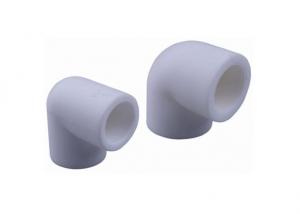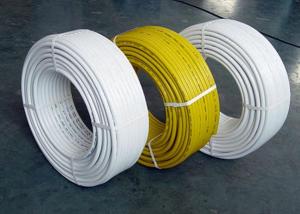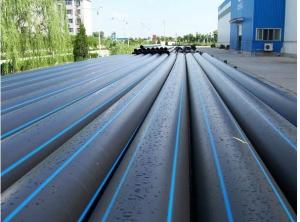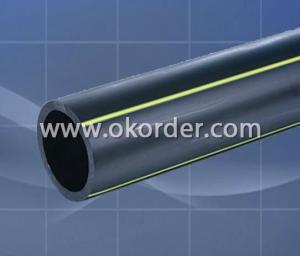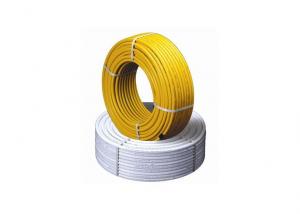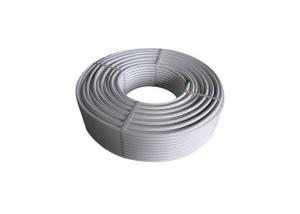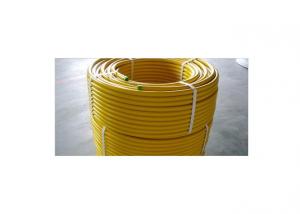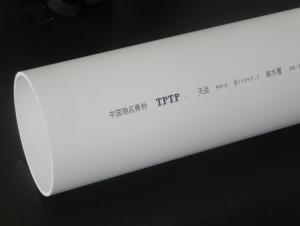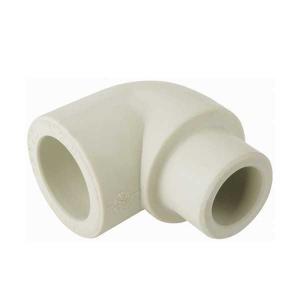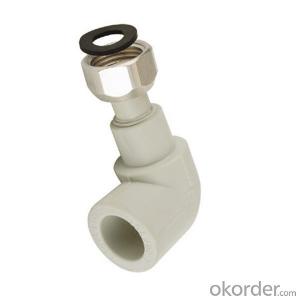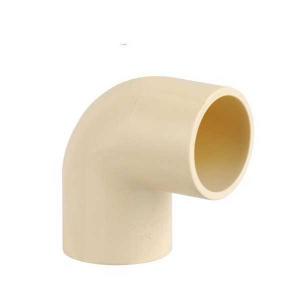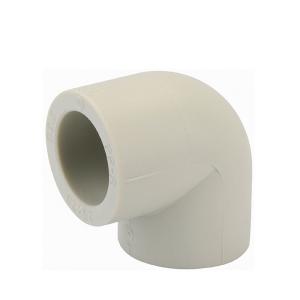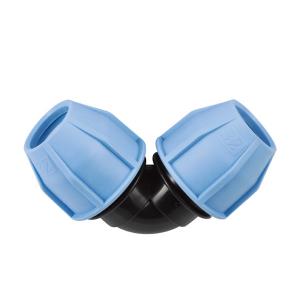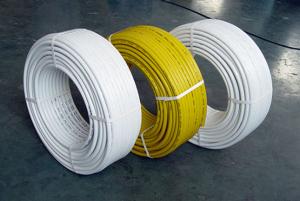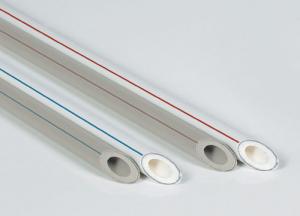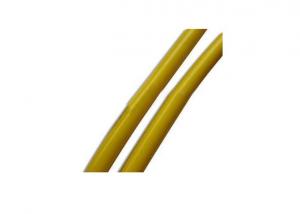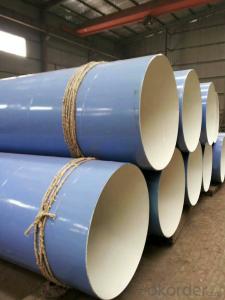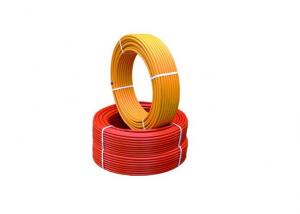Composite Pipes 90 Elbow
- Loading Port:
- China Main Port
- Payment Terms:
- TT or LC
- Min Order Qty:
- 500 Pieces pc
- Supply Capability:
- 10000 Pieces per Day pc/month
OKorder Service Pledge
OKorder Financial Service
You Might Also Like
90 Elbow
Certificate: CE; ISO9001
Pressure: PN2.5Mpa
Size: 16-160 mm
Colors: on request
15 years experience in PP-R line
Features of 90 Elbow:
Material: Polypropylene
Sizes: 16 to 160mm
Pressure: PN2.5Mpa
Colors: Light grey, white or other colors on request
Connection: Welding
Standard: GB/T18742.2-2002; DIN8077/8078
Certification: CE, ISO9001
Applications: Cold or hot water supply, heating system, wall heating and radiating system
Advantages of 90 Elbow:
High Temperature Resistance: the maximum sustained working temperature is up to 70 °C,the maximum transient temperature is up to 95°C
Non-toxic: no heavy metal additives, would not be covered with dirt or contaminated by bacterium.
Corrosion Resistant: resist chemical matters or electron chemical corrosion.
Lower Installation Costs: light weight and ease of installation can reduce installation costs
Higher Flow Capacity: smooth interior walls result in lower pressure loss and higher volume
Long Life: more than 50 years under normal conditions
Recycled and Environment-friendly
- Q: Can composite pipes be used for irrigation in hilly terrains?
- Yes, composite pipes can be used for irrigation in hilly terrains. Composite pipes are known for their strength, durability, and flexibility, making them suitable for installation in challenging terrains. Their lightweight nature and resistance to corrosion make them an ideal choice for irrigation systems in hilly areas, as they can withstand the pressure and movement of the land without compromising the water flow.
- Q: Do composite pipes require insulation in cold weather?
- Yes, composite pipes generally require insulation in cold weather to prevent freezing and maintain desired temperatures.
- Q: Can composite pipes be used for swimming pool installations?
- Yes, composite pipes can be used for swimming pool installations. Composite pipes are highly resistant to corrosion, lightweight, and durable, making them a suitable choice for swimming pool applications. Additionally, composite pipes are flexible and easy to install, allowing for seamless plumbing in swimming pool systems.
- Q: Plastic pipe and plastic composite pipe is one thing? Where's the difference?
- The plastic pipe is a steel plastic composite pipe, like the Han nationality is the Chinese nation in a same.
- Q: Are composite pipes resistant to ultraviolet radiation?
- Composite pipes are generally resistant to ultraviolet radiation. The materials used in their construction, such as fiberglass or carbon fiber, possess inherent UV resistance, making them suitable for outdoor applications that are exposed to sunlight. However, the level of UV resistance may vary depending on the specific type and quality of composite used, so it is advisable to consult the manufacturer's specifications for accurate information.
- Q: Can composite pipes be used for pneumatic tools?
- Yes, composite pipes can be used for pneumatic tools. Composite pipes, made of materials like fiberglass or carbon fiber, are lightweight and have excellent strength-to-weight ratios. They are resistant to corrosion and can withstand high pressure and temperature conditions, making them suitable for use with pneumatic tools. Additionally, composite pipes offer flexibility, reducing the risk of leaks and minimizing vibrations, enhancing the performance and efficiency of pneumatic tools.
- Q: Who knows how the double IGBT of the electromagnetic oven forms a composite tube?
- IGBT is a composite tube consisting of a SHM (bipolar power high speed switching tube) and a MOS (insulated gate type FET), and the connection is similar to that of Darlington transistors. Among them, SHM is a current controlled transistor, and MOS is a voltage controlled transistor, so it is called full control.
- Q: Are composite pipes suitable for power plant cooling systems?
- Yes, composite pipes are suitable for power plant cooling systems. Composite pipes offer several advantages such as high corrosion resistance, lightweight, and excellent thermal properties. They can withstand high temperatures and pressures, making them ideal for cooling systems in power plants. Additionally, composite pipes require less maintenance and have a longer lifespan, resulting in cost savings for power plant operators.
- Q: Do composite pipes have a low noise transmission?
- Yes, composite pipes have a low noise transmission due to their excellent sound insulation properties.
- Q: When will the PSP steel plastic composite pipe be of type G connection?
- Internal expansion (G type) applies to DN25--DN110 specifications of plastic steel composite pressure pipe, exposed, buried and buried water pipe system, nominal pressure is not greater than 1.6Mpa, the transmission medium temperature is less than 40 degrees Celsius occasions
1. Manufacturer Overview
| Location | Zhejiang, China |
| Year Established | 2004 |
| Annual Output Value | |
| Main Markets | North America South America Eastern Europe Southeast Asia Africa Oceania Mid East Eastern Asia Western Europe |
| Company Certifications | CE;ISO9001:2000 |
2. Manufacturer Certificates
| a) Certification Name | |
| Range | |
| Reference | |
| Validity Period |
3. Manufacturer Capability
| a) Trade Capacity | |
| Nearest Port | |
| Export Percentage | 31% - 40% |
| No.of Employees in Trade Department | |
| Language Spoken: | |
| b) Factory Information | |
| Factory Size: | 10,000-30,000 square meters |
| No. of Production Lines | 6 |
| Contract Manufacturing | OEM Service Offered Buyer Label Offered |
| Product Price Range | |
Send your message to us
Composite Pipes 90 Elbow
- Loading Port:
- China Main Port
- Payment Terms:
- TT or LC
- Min Order Qty:
- 500 Pieces pc
- Supply Capability:
- 10000 Pieces per Day pc/month
OKorder Service Pledge
OKorder Financial Service
Similar products
Hot products
Hot Searches
Related keywords
